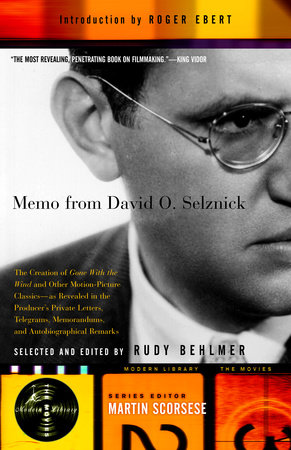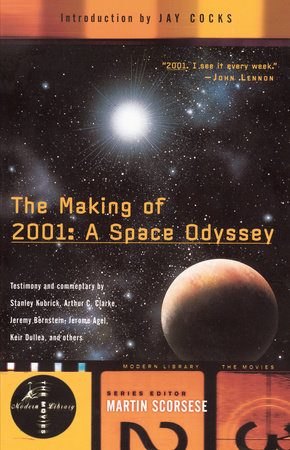Excerpt
Memo from David O. Selznick
Gone With the Wind (1936-1941)WHEN I HESITATED about paying $50,000 for a novel about the Civil War--the largest price ever paid for a book that was not even established as a success--Jock Whitney wired me that if I didn't buy it for Selznick International, he would buy it, and hold it for the company if I wanted it. This was all the encouragement I needed, and rather than have Jock have the last laugh on me, we went ahead and bought
Gone With the Wind. I then went to Hawaii on vacation and read the novel on board ship.
Much later, Metro demanded half the film, and secured it, for a loan of Clark Gable. They put up $1,250,000-and we took all the gamble. (The picture cost $4,250,000.) The risk money was entirely ours, secured from the banks, due to the great support I had from Jock Whitney, who approved enthusiastically everything I did in this particular.
Whitney had the last laugh on all the self-appointed critics who picked on him and on the company for what looked like a foolish endeavor in attempting to have our little company try to make the biggest picture of all time, a film that would have strained the resources of the largest of studios.
MGM had no controls whatsoever over the making of Gone With the Wind, and indeed we produced it at our own studio, Selznick International, without even any of their staff MGM had urged me to make the picture with, Joan Crawford as Scarlett, Maureen O'Sullivan as Melanie, and Melvyn Douglas as Ashley. I said they were all very good people, but they would all be miscast. Fortunately, I had the authority to cast it as I saw fit, as I did with all my other pictures.
A producer can only find and put over new personalities when he has patience, and the money for overhead, and the authority to refuse to be rushed into making his Judgments. If you have to get somebody by Wednesday when shooting starts, you take the best available and cross your fingers and pray. The pressure for haste on Gone With the Wind was severe, but I knew that seventy-five million people would want my scalp if I chose the wrong Scarlett, and that there was no agreement on who, among all the girls in pictures, was the right Scarlett. For instance, there were just as many people against Bette Davis as there were for her; maybe more. So I had no alternative to sticking to it and looking everywhere.
In addition to her vitality and beauty, her striking personality and enormous natural ability, Vivien Leigh bad a background of training and acting experience that made her a fine actress. Vivien made no secret of her opinion of certain scenes as she went along- during the 122 days she was on the set during Gone With the Wind, she groused plenty.- before a scene, she would be muttering deprecations under her breath and making small moans. According to Vivien, the situation was stupid, the dialogue was silly, nobody could possibly believe the whole scene. And then, at a word from Victor Fleming, who was not merely a very fine director but a man who had the ability to conceal the iron hand in the velvet glove, she would walk into the scene and do such a magnificent job that everybody on the set would be cheering.






